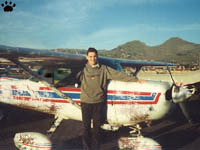
Ready for takeoff, Nayarit, Mexico.
Coon Air
One of many places that are extremely interesting for a naturalist,
but very difficult to get to, are Islas Tres Marias off the western coast of Mexico.
They are tantalizingly close to the mainland (about 100 km), and have dozens of
endemic species and subspecies of animals and plants, plus some of the best diving
sites in Central America.

For decades, fishing has been banned
off Tres Marias. Now it's one of the
world's most pristine diving sites. |
Since 1919, the islands have served as a penal
colony with thousands of inmates. In April 2003, the government declared its plan
to close the colony, turn the islands into a Nature reserve, and allow resort
development. However, according to local residents, many of the inmates refused
to leave the colony, and the future of the project is still uncertain. For now,
the irregular boat service has been canceled, and the only way to get to Las Tres
Marias is illegally, by a private plane or boat. |
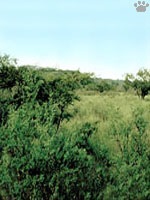
Most of the Tres Marias Islands
are now covered with pastures,
brushlands, and open savanna. |
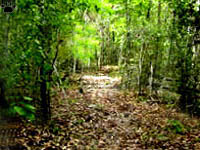
Larger islands are still 20-25% forested, with
dry tropical forests occurring above 150-250 m. |
I wanted very much to get to the islands, so I
looked for an opportunity to rent a boat or a plane. (I'd once tried to get a
pilot's license, but had to drop out just before my first solo flight for financial
reasons). |
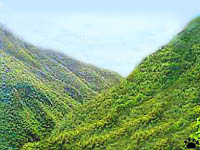
In some deep ravines running west from 600-m
high volcanic hills, tropical rainforests exist. |
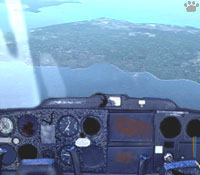
Approaching Las Tres Marias. |
Eventually, I found someone willing to lend me
a Cessna 152 for just $100. My 1996 Russian driver's license passed for a private
pilot's. I couldn't use airfields, and had to land on a remote beach on Maria
Madre, the largest island in the group. |
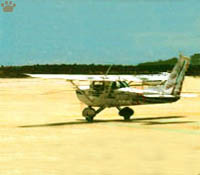
Beach landing site, Maria Madre I. |

The first ever photo of Tres Marias raccoon tracks,
Maria Madre Island. Raccoons patrol the beaches
in search of sea turtle eggs and other edibles. |
I spent a day and a night there, snorkeling and
hiking. I managed to find many island endemics, including all three mammal species:
bat Myotis findleyi, rabbit Sylvilagus graysoni, and the endangered
Tres Marias Islands raccoon. |
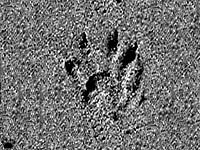
Tracks of common raccoon are more elongated in
shape. There are also differences in stride length.
Lost Coast, California. |
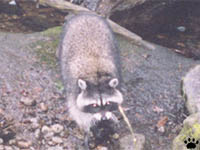
Common raccoon (Procyon lotor),
California. |
This enigmatic creature differs from both mainland
raccoon species, but is more closely related to common raccoon. With less than
250 left (all on Maria Madre), it's likely the rarest carnivore in the Americas. |
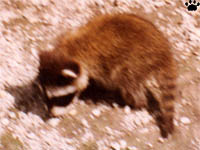
Crab-eating raccoon (P. cancrivorus), Venezuela. |
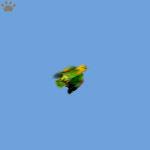
Rare Tres Marias amazon (Amazona
ochrocephala tresmariae) is much
valued by aviculturists. |
The return flight was a bit difficult (I could only take off at low tide, and
ran into some turbulence just before landing), but I had with me the first photo
of Tres Marias Islands raccoons ever taken. A more scientific account of this
trip was published in April 2004 issue of Small
Carnivore Conservation. I hope the islands will become a Nature reserve
eventually.
|
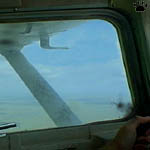
It's so nice to be over land again
after a risky flight over sea in a
dilapidated single-engine plane. |
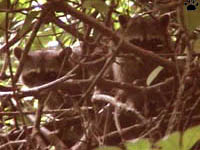
Tres Marias Islands raccoons (P. insularis) in
riparian forest, Maria Madre Island.
Home
|